Metamorphosis
An incredible specialisation
Some insects have a life cycle starting from the egg progressing through an immature stage called a larva then onto the mature adult. In between the larva and the adult some insects develop a capsule of dried skin around them called a pupa, shown on the right. The pupa is actually a resting phase in the life cycle and the adult that emerges from the pupa is often very different in shape, form and function to the larva. This process is called Complete Metamorphosis.
The pupa can survive the cold winter months. Only in this stage can a butterfly go from one summer to the next.
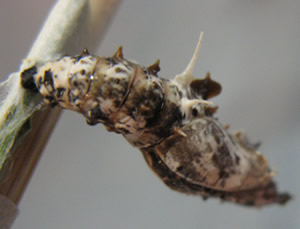
A few terms may need to be clarified and are sometimes used interchangeably, which is wrong.
A pupa is the resting stage of an insects lifecycle. A chrysalis is the protective outer layer of a butterfly pupa, formed by the hardening of its skin, whereas a cocoon is formed by spinning silk casing around the moth larva.
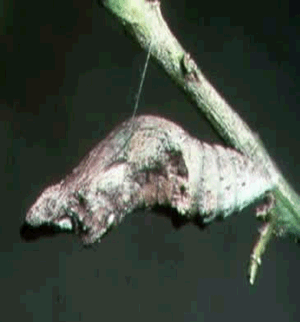
The video on the right shows how the pupa forms a chrysalis by shedding its skin.
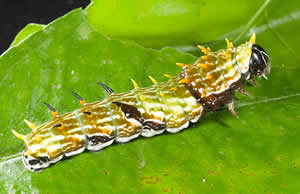
The adult stage, butterfly, has compound eyes that allow it to have 360 degree vision it also has wings and is very mobile. Its food mostly consists of liquid nectar which it sucks through a long tube called the proboscis. The adult (butterfly) has three pairs of legs which are totally different in form and function to the suction-cup type legs of the caterpillar. The butterfly can actually taste food through its legs. Mating is the speciality of the butterfly, it can mate and lay eggs.
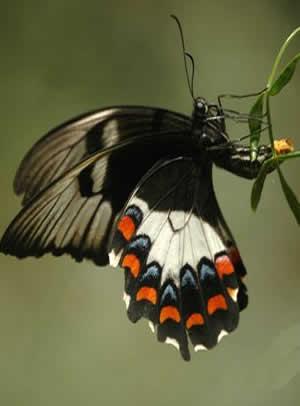
As you can see the butterfly's life-cycle is full of specialisation of form and function.
The role of the butterfly is to
The resting stage is called the
The caterpillar is called the
The purpose of the larva is to
The adult feeds on nectar through a specialised feeding apparatus called a
The caterpillar's feet enable it to
In what stage does the butterfly survive the winter?
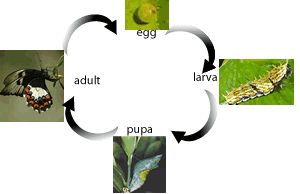
Compare the features of the butterfly and caterpillar and discuss how they assist each to carry out their specialised functions.
Explain how Complete Metamorphosis has evolved to improve the insect’s chances of survival.
Why is it important for the butterfly to have
wings?
Part 1
Part 2